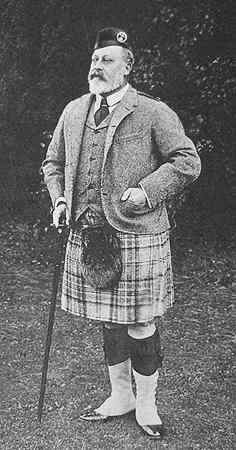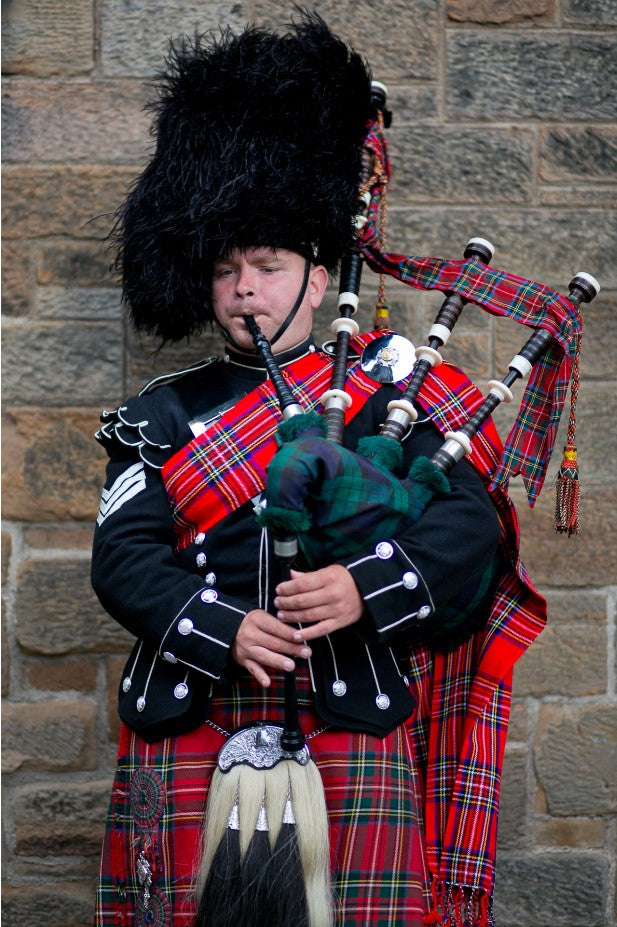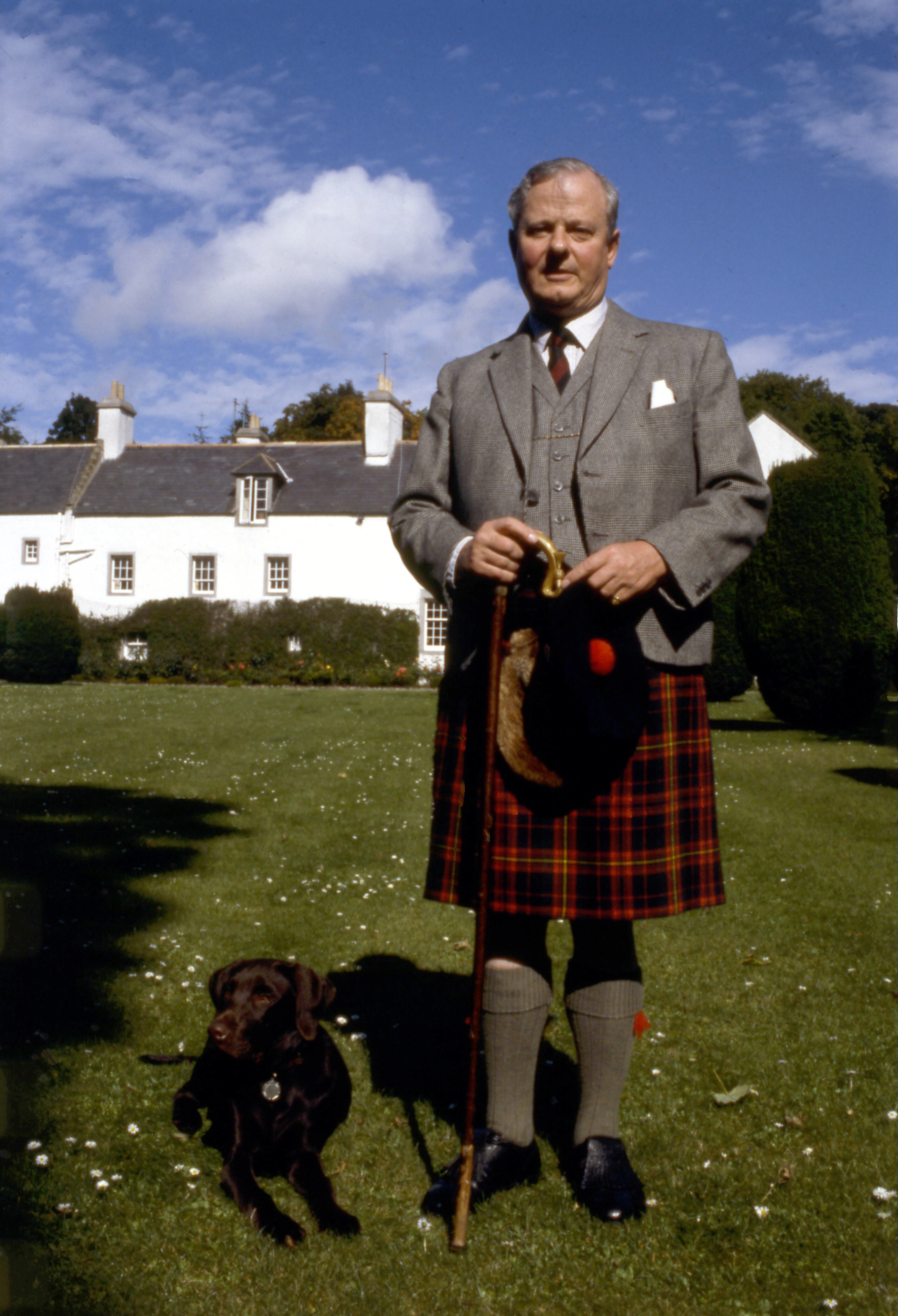Table of Content
Traditional Highland dress is not just a clothing style—it is a powerful symbol of Scotland’s rich cultural heritage, representing centuries of tradition, pride, and resilience. As a prominent part of Scotland’s identity, the Highland dress, including the iconic kilt, holds deep-rooted significance in the nation’s history. This article delves into Traditional Highland dress's origins, variations, and importance, ensuring that you understand why it remains a timeless symbol of Scotland.
I. An Overview of a Traditional Highland Dress
1. What is a Traditional Highland Dress?
Traditional Highland dress specifically refers to the clothing worn by Scottish Highlanders, especially during formal events, celebrations, and Highland games. This Traditional Scottish Attire usually consists of a kilt, sporran, and various accessories that can differ based on the occasion and region. It is often distinguished by tartan patterns (known as plaid in North America). Specific shirts, jackets, bodices, and headwear styles may also be included, along with clan badges and other symbols representing family and heritage.

Men's Traditional Highland Dress generally features a kilt or trews made from their clan's tartan, accompanied by either a full plaid, fly plaid, or short belted plaid, along with some accessories. Women's Traditional Highland Dress is similarly based on clan tartan, either that of her birth clan or her spouse's clan if she chooses. Traditionally, women and girls do not wear kilts but may opt for ankle-length tartan skirts paired with a matching blouse and vest. Additionally, they might wear a tartan earasaid, sash, or tonnag (a smaller shawl), typically fastened with a brooch, which may display a clan badge or other family or
2. What’s the importance of the Traditional Highland dress?

Aside from being a customary outfit from Scotland, the Traditional Highland dress is important to its wearers and their heritage connections. This Scotland Traditional Attire has been used for formal events and warfare, including during World War II. For numerous individuals, it continues to represent a distinctive, patriotic, and symbolic expression of Scottish, Gaelic, and Celtic heritage.
3. Origins of the Traditional Highland Dress

The kilt, frequently seen as the essence of Traditional Highland Dress, has been donned in Scotland for many centuries. Its beginnings can be traced to the 16th century when it started as a sizable piece of fabric draped over the shoulder and secured at the waist. Over the years, the kilt transformed into a fitted garment that is now well-known globally.
II. The History of the Traditional Highland Dress
The history of Traditional Highland Dress can be traced back to the 16th century when the kilt became a practical garment for men working in the rugged terrain of the Highlands. Originally, kilts were made from wool, woven into distinctive tartan patterns that represented different Scottish clans and families. The custom of Traditional Highland Dress was recognized as a formal representation of authority and affluence. The first instances of Highland attire were observed among the chieftains of Highland clans and their followers. They served as ceremonial garments highlighting individuals with talents that granted them significant social standing, including bards, storytellers, and musicians.
English military chaplain Thomas Morer wrote in 1689 that Highland men draped plaids measuring about seven or eight yards (6.4 to 7.3 m) long, which covered their bodies from neck to knees, leaving only the right arm exposed. Underneath the plaid, they typically wore a waistcoat or a shirt that matched the length of the plaid.

These garments were known as "belted plaids." Their stockings were made from the same fabric as the plaid, and their footwear was referred to as "brocks" (brogues). The bonnets worn were either blue or of a muted color. Morer observed that the quality of the fabric depended on the man's wealth and position.
III. Types of Traditional Highland Dress
1. Ancient Traditional Highland Dress
In many situations, ‘ancient’ implies something old-fashioned. Still, in this context, it pertains to the color scheme of Highland dress. The colors of an ancient Traditional Highland Dress tend to be gentle and pale, selected to resemble the original shades of early tartans made with natural dyes. Consequently, ancient Highland tartans often have pastel tones, creating the impression of fabric that has been used for many years.

2. Modern Traditional Highland Dress
The color of tartan characterizes modern Traditional Highland Dress. The designs in contemporary Highland attire feature bold, darker shades to distinguish them from the lighter, pastel hues of traditional Highland dress. These colors include deep greens, reds, and navy, reflecting the evolution of Highland fashion.
Scottish Highland dress can be worn casually and formally, particularly at ceilidhs and weddings. All modern Highland outfits for men and women begin with tartan, which may be kilts, trews, arisaids, sashes, or tonnags. Scottish Tartan patterns are recorded with the Scottish Register of Tartans in Edinburgh, a governmental body. They are typically associated with specific clans or their branches.

In the past, weapons such as the mattucashlass and Scottish Dirk were commonly included as part of men's traditional Highland Dress. However, current UK knife regulations have led to the prevalence of smaller sgian-dubhs and sword-shaped kilt pins instead. For footwear, both men and women often wear dance ghillies, which are lightweight, foldable shoes primarily used indoors and for Scottish dancing. The construction involves a single piece of leather forming the sole and upper, wrapping around the foot from beneath, laced at the top, and stitched at the heel and toe. These shoes do not have tongues, allowing quicker feet drying in Scotland.
Here are some popular Scottish costumes:
A. Formal day wear (morning dress)
Traditional Highland Dress can serve as a folk costume for morning dress events. Men's formal Traditional Highland Dress typically includes a black, charcoal, or tweed kilt jacket made from superfine wool or barathea; a matching belt and buckle or a grey or tartan waistcoat; a kilt; a white shirt with a collar and cufflinks; a long tie in a solid or striped pattern; and black brogues, although brown shoes are sometimes worn by royals despite common opinion. Suitable hosiery includes tartan, argyle, diced, or solid dark colors, while white hoses should be avoided. Accessories like flashes, a sporran, and a simpler sgian-dubh made of horn or antler complete the outfit.

B. Formal evening wear (white tie)
The traditional white-tie Highland dress for men includes several formal components. It features a kilt doublet made from barathea or velvet, with options like Montrose, Sheriffmuir, and Kenmore available in various colors. The less formal Prince Charlie jacket was meant to be worn with a white lace jabot. Waistcoats can be made from white marcella, matching tartan, red, or the same fabric as the doublet. A white lace jabot can be replaced by a black silk or white marcella bow tie, as Highland attire often includes a black bow tie even at formal events.
Footwear is typically black formal shoes or black buckle brogues, paired with tartan or diced kilt hose and silk garters. The ensemble is completed with a silver-mounted sporran made from fur, sealskin, or hair, along with a black sgian-dubh that is also silver-mounted and jeweled. Outdoors, a Highland bonnet such as the Balmoral or Glengarry is worn with a crest badge, and optionally, a short belted plaid with a silver brooch and a Scottish dirk can be added.
C. Semi-formal day wear (black lounge suit equivalent)
Men's semi-formal Highland dress usually features a black or charcoal kilt jacket made from superfine wool or barathea, with styles like Argyll, Crail, or Braemar. It includes a five- or six-button waistcoat in black, grey, putty, or tartan, paired with a kilt and a white shirt that has a turndown collar, French cuffs, and cufflinks. The outfit is finished with a single-color tie and black brogues. Recommended hose patterns are tartan, argyle, diced, or dark, while white or off-white should be avoided. Accessories consist of flashes or garter ties and a day-dress sporran, typically in simple black leather, though a full dress sporran is also acceptable. Lastly, a less ornate day-dress sgian-dubh, often made of horn or antler, completes the semi-formal look.
D. Semi-formal evening wear (black tie)
Men's black-tie Highland dress typically includes several elegant components. It generally features a solid color barathea jacket with silver buttons, with styles like the Regulation Doublet, Prince Charlie, and others being appropriate. The outfit includes a black waistcoat, kilt, and white shirt decorated with studs, French or barrel cuffs, and a turndown collar (wing collars are for white tie). A black bow tie and evening dress brogues complete the attire. Recommended kilt hose are tartan or diced, while off-white hose might appear despite criticism. Silk flashes or garter ties provide additional style, along with a dress sporran with a silver chain, a black sgian-dubh, and a Highland bonnet with a crest badge suitable only for outdoor use.

IV. Components of Traditional Highland Dress
1. The Kilt
The kilt is not merely a skirt but an intricately designed garment with a rich historical background. Typically, it is a pleated skirt that reaches the knees and is made from wool fabric. Each kilt features unique tartan patterns that symbolize different Scottish clans and is gathered at the back to wrap around the body. Often, kilts are paired with a belt and various accessories. Its history dates back to the 16th century and remains a symbol of Scottish pride and unity today. There are some common types of kilts:

- Heavyweight Kilts: Typically worn for formal occasions, made from thick, durable tartan fabric.
Lightweight Kilts: Ideal for summer events or outdoor festivals, offering breathability and comfort.
Modern Kilts: These may incorporate non-traditional materials and styles but still pay homage to classic designs.
🔍 Learn more about the different types of kilts in Scotland to deepen your understanding of their unique styles and cultural significance!
2. The Sporran

It is a small bag commonly used in place of pockets. It is the Scottish counterpart to bags. The Sporran is worn at the waist, typically behind the stomach, but often positioned to the side. Some sporrans are made of plain leather, while others use animal fur, and a few have additional decorative features. They usually have three tassels. One of the most unusual things about traditional Highland attire is that many sporrans resemble furry ferrets that hang from the kilt wearer. Unsurprisingly, the term 'sporran' comes from the Gaelic word for 'purse'.
3. Sgian Dubh and Dirk

Historically, the sgian dubh is a compact knife typically kept tucked into the kilt hose, serving both functional and symbolic purposes. It is frequently seen as a symbol of social standing and connects to Scotland's martial heritage. Furthermore, the Scottish Dirk, which is a ceremonial dagger, plays a crucial role in the traditional attire of the Highlands. Both of these items are emblematic of Scotland's warrior traditions and are frequently inherited through family lines, reflecting their cultural significance
4. Ghillie Brogues

A Highland outfit can only be considered complete with including ghillie brogues. These unique shoes stand out due to their distinctive lacing style, where the laces are wrapped around the ankle area. Unlike conventional shoes, ghillie brogues are usually crafted from leather and lack a traditional tongue. They may also feature metal heels, enabling wearers to dance on tiptoe during evening events. Originally, these shoes were designed to help individuals traverse Scotland's challenging and uneven landscapes. In contemporary fashion, they have become an essential component of formal Traditional Highland Dress.
5. The Prince Charlie Jacket
This formal coat is usually donned for significant events like weddings or ceremonies. It closely resembles the Argyll jacket but tends to be pricier and more formal. The Prince Charlie jacket enhances the outfit's sophistication when worn with a kilt. It features silver buttons and is commonly paired with a bow tie or cravat.

6. Flashes

Kilt Flashes consist of two strips of fabric with a small triangular cut at the bottom. They are secured to a band of elastic, often called garters. These flashes are sold in pairs, meaning there is one for each leg, and they serve a very useful purpose by keeping the socks in place on the legs, no matter how energetic the ceilidh dancing may get.
7. Tam o' Shanter

The Tam o’ Shanter is a classic traditional cap that has its name derived from a famous poem by the renowned Scottish poet Robert Burns. This distinctive headwear features a flat top and is usually made from wool, giving it a unique texture and appearance. Tam o' Shanters are frequently associated with their characteristic laced ginger hair, and they tend to be commonly found in comic shops rather than more conventional retail outlets. Consequently, due to this association, it is unsurprising that these caps are not particularly popular or well-received in Scotland.
🔔 Besides Tam o'Shanter, what other types of hats are there in Scotland? Discover The Different Types of Scottish Hats You Should Know
V. When can you wear it?
Traditional Highland Dress doesn't have to be limited to just special events and ceremonies. There's ample opportunity for personal expression with traditional Scottish clothing, and by modifying certain elements, you'll discover that your Highland outfit can be suitable for various occasions. For daytime wear, sticking to the essential pieces of the outfit will create a more relaxed style. For instance, a simple kilt pattern combined with a thick knit sweater provides a casual and comfortable take on Highland fashion. Wearing boots instead of brogues keeps the look laid-back and prevents it from appearing overly formal.

To achieve a semi-formal appearance, swapping boots for brogues, adding a plain shirt beneath your sweater, or incorporating a blazer will enhance the outfit for either a daytime or evening event that is more sophisticated. For a completely formal ensemble, team the kilt with a shirt, dinner jacket, waistcoat, and tie for a quintessential Highland appearance. Add brogues, and use accessories to enrich the overall look further and showcase traditional highland clothing at its best.
VI. How to wear a Highland dress properly?
While natives of Scotland may know how to wear Traditional Highland Dress, this might not be the case for everyone else. Those trying on Highland wear for the first time often feel they need more certainty about properly dressing in this traditional outfit. There is a straightforward sequence to follow for those who are less familiar. Start by organizing everything except the kilt, including your shirt, tie, socks, shoes, flashes, and sgian dubh. Make sure to pull your socks up to your knees and place the flashes on the outside of your legs just above the sock turn-down. After that, you can focus on putting on the kilt.
Wear the kilt with the pleats facing backward, ensuring it sits about 2 inches above your waist. The hem of the kilt should hit the middle of your kneecap so that when you kneel, the bottom touches the ground, which is a traditional method. Position the sporran at the center of the front apron of the kilt, with the chain strap secured at the back. Finally, attach a single kilt pin through the front of the apron for decoration.
💡 Traditionally in Scotland, Kilts are considered the traditional clothing of men in Scotland. So Do women wear kilts in Scotland? Find out now.
Traditional Highland Dress: More than Just Clothing
Frequently Asked Questions
What occasions call for wearing a Traditional Highland Dress?
Traditional Highland Dress is typically worn at weddings, Highland games, cultural festivals, and formal events. Some people also wear it during informal gatherings or family celebrations.
What is the difference between a kilt and a modern utility kilt?
While traditional kilts are made from wool and often feature tartan patterns representing clans, modern utility kilts prioritize functionality, featuring pockets and being made from lighter, sometimes synthetic materials.
What did Scots wear before the kilt?
léine
Before the introduction of kilts, tartan, and the modern Scottish identity, Scotland's inhabitants dressed similarly to many others in northern Europe. Their attire was known as the léine, a long tunic resembling a shirt. The léine was crafted from linen, a readily available and inexpensive material.
Can females wear kilts?
Kilts are a flexible piece of clothing suitable for anyone, not limited by gender. Although the classic kilt is commonly linked to Scottish males, women have also embraced kilts for a long time. In Scotland, women's kilts are typically called "kilted skirts" and tend to be tailored to fit more closely than those made for men.












